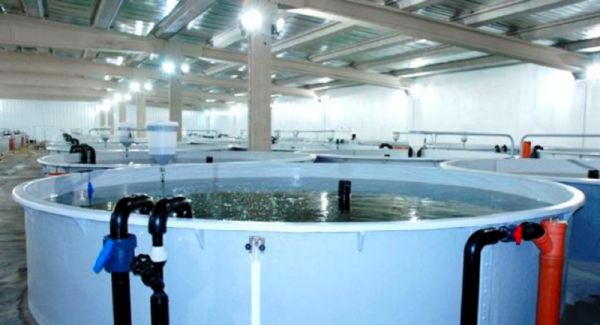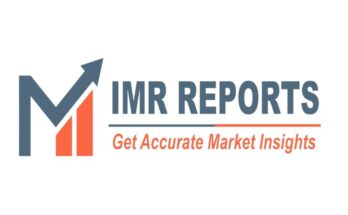Integrated Recirculating Aquaculture System (RAS) Market represents a revolutionary approach to fish farming, aiming to meet the growing global demand for seafood while addressing the environmental and sustainability challenges associated with traditional aquaculture practices. RAS is a technology-driven system that allows fish and other aquatic organisms to be raised in a controlled and recirculating environment, minimizing water usage, waste discharge, and environmental impact.
Traditional open-net pen aquaculture has faced significant criticism due to its potential negative effects on the surrounding ecosystems, such as water pollution, disease outbreaks, and the risk of escaped fish impacting wild populations. In contrast, Integrated RAS offers a sustainable and efficient alternative by creating a closed-loop environment that promotes waste recycling, enhanced biosecurity, and reduced reliance on antibiotics or chemical treatments.
Key Components of Integrated RAS:
Water Filtration and Purification: RAS employs advanced filtration technologies to remove excess nutrients, solid waste, and harmful substances from the water. Mechanical, biological, and chemical filtration processes work in tandem to maintain water quality.
Biological Treatment: Beneficial bacteria play a crucial role in RAS by converting toxic ammonia, produced from fish waste, into less harmful compounds through nitrification processes.
Oxygenation: Proper aeration and oxygenation are essential to maintain optimum dissolved oxygen levels in the water, ensuring the health and well-being of aquatic organisms.
Monitoring and Control Systems: Integrated RAS relies on sophisticated monitoring and control systems to regulate parameters such as water temperature, pH levels, oxygen levels, and feed distribution. Automation enhances system efficiency and reduces the risk of human errors.
Advantages of Integrated RAS:
Environmental Sustainability: By significantly reducing water usage and minimizing waste discharge, RAS helps protect natural aquatic ecosystems, conserves water resources, and mitigates pollution risks.
Disease Control: The closed-loop system of RAS reduces the risk of exposure to pathogens from external sources, leading to better disease management and decreased reliance on antibiotics.
Land Utilization: RAS facilities can be established in various locations, including urban areas, without the need for vast bodies of water, making efficient use of land resources.
Increased Production Potential: RAS enables year-round fish production, independent of seasonal fluctuations, leading to a consistent and reliable supply of fish products.
Market Outlook: The Integrated RAS market has witnessed substantial growth in recent years, driven by increasing consumer demand for sustainable seafood and the need for innovative aquaculture solutions. Governments and regulatory bodies have also recognized the environmental benefits of RAS, providing incentives and support for its adoption.
While the initial investment in RAS technology can be higher than traditional aquaculture systems, its long-term economic viability, reduced environmental impact, and improved product quality make it an attractive option for investors, fish farmers, and seafood consumers alike.
Click Here, To Get Free Sample Report: https://stringentdatalytics.com/sample-request/integrated-recirculating-aquaculture-system-(ras)-market/9836/
Market Segmentations:
Global Integrated Recirculating Aquaculture System (RAS) Market: By Company
• Skretting
• Xylem
• RADAQUA
• PR Aqua
• AquaMaof
• Billund Aquaculture
• AKVA Group
• Hesy Aquaculture
• Aquacare Environment
• Qingdao Haixing
• Clewer Aquaculture
• Sterner
• Veolia
• MAT-KULING
• Fox Aquaculture
• Pentair
• Innovasea
• Nocera
• BioFishency
• SENECT
• Alpha Aqua
Global Integrated Recirculating Aquaculture System (RAS) Market: By Type
• Closed Type
• Semi-Closed Type
Global Integrated Recirculating Aquaculture System (RAS) Market: By Application
• Indoor System
• Outdoor System
Global Integrated Recirculating Aquaculture System (RAS) Market: Regional Analysis
All the regional segmentation has been studied based on recent and future trends, and the market is forecasted throughout the prediction period. The countries covered in the regional analysis of the Global Integrated Recirculating Aquaculture System (RAS) market report are U.S., Canada, and Mexico in North America, Germany, France, U.K., Russia, Italy, Spain, Turkey, Netherlands, Switzerland, Belgium, and Rest of Europe in Europe, Singapore, Malaysia, Australia, Thailand, Indonesia, Philippines, China, Japan, India, South Korea, Rest of Asia-Pacific (APAC) in the Asia-Pacific (APAC), Saudi Arabia, U.A.E, South Africa, Egypt, Israel, Rest of Middle East and Africa (MEA) as a part of Middle East and Africa (MEA), and Argentina, Brazil, and Rest of South America as part of South America.
Direct Report Purchase this Market Research: https://stringentdatalytics.com/purchase/integrated-recirculating-aquaculture-system-(ras)-market/9836/?license=single
Objectives of Integrated Recirculating Aquaculture System (RAS) Market Study:
- Market Size and Growth Analysis: Determine the current size of the RAS market in terms of revenue and volume and analyze historical growth patterns. Identify factors driving market expansion and forecast future growth prospects.
- Competitive Landscape: Analyze the competitive landscape of the RAS market by identifying key players, their market shares, and strategies. Evaluate strengths, weaknesses, opportunities, and threats (SWOT analysis) for each major player.
- Technological Advancements: Investigate the latest technological developments and innovations in RAS systems, including water treatment, automation, monitoring, and other relevant aspects that enhance efficiency and sustainability.
- Regulatory Environment: Explore the regulatory framework governing RAS technology and aquaculture practices in different regions. Understand how regulations impact the market and identify potential challenges and opportunities arising from compliance requirements.
- Market Drivers and Restraints: Identify the primary factors driving the adoption of RAS technology, such as increased demand for sustainable aquaculture, water scarcity concerns, and consumer preferences for high-quality products. Also, assess potential barriers to market growth, such as high initial investment costs.
- Economic Viability and Cost Analysis: Conduct a cost-benefit analysis to evaluate the economic viability of adopting RAS technology compared to traditional aquaculture methods. Assess the long-term financial benefits and return on investment for farmers and investors.
- Environmental Impact: Examine the environmental benefits of RAS technology, including reduced water usage, waste management, and decreased pollution compared to conventional aquaculture systems.
- Market Opportunities: Identify emerging opportunities and untapped markets for RAS technology in different regions, species, or application areas.
- Risks and Challenges: Analyze potential risks and challenges associated with RAS technology implementation, such as technical issues, disease management, and market volatility.
- Consumer Perception and Demand: Understand consumer perceptions and preferences regarding products produced through RAS technology. Evaluate the demand for sustainably sourced aquaculture products and its influence on the market.
About US:
Stringent Datalytics offers both custom and syndicated market research reports. Custom market research reports are tailored to a specific client’s needs and requirements. These reports provide unique insights into a particular industry or market segment and can help businesses make informed decisions about their strategies and operations.
Syndicated market research reports, on the other hand, are pre-existing reports that are available for purchase by multiple clients. These reports are often produced on a regular basis, such as annually or quarterly, and cover a broad range of industries and market segments. Syndicated reports provide clients with insights into industry trends, market sizes, and competitive landscapes. By offering both custom and syndicated reports, Stringent Datalytics can provide clients with a range of market research solutions that can be customized to their specific needs.
Contact US:
Stringent Datalytics
Contact No – +1 346 666 6655
Email Id – [email protected]


